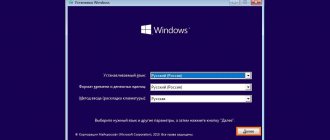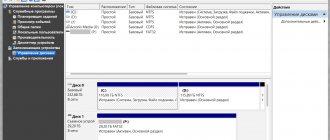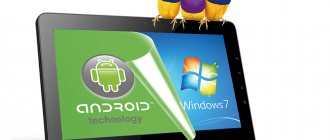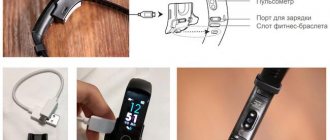With the release of Windows 10, Microsoft has almost completely eliminated the need to use service centers and various wizards to install the operating system on a PC or laptop. Now, if a user has a flash drive, in just a few minutes he can create a bootable flash drive, boot from it from the BIOS and install the OS in about ten minutes (depending on the type of drive). To do this, you don’t need to be an experienced user or know any tricky commands - the whole process is described below in a step-by-step format, you just need to do everything according to the guide. Moreover, at the end of the article there is a list of the most popular problems and options for their solutions.
Subscribe to our Zen
Subscribe to our Zen
How to create a bootable USB flash drive for Windows 10
- You will need a flash drive of 8 GB or larger. During the boot process of Windows 10, all data from it will be erased.
Before installing the operating system, the user first needs to make a bootable Windows 10 USB flash drive (or DVD using Rufus or Ultra ISO and ISO image). It is best to use the official Microsoft utility to create a bootable USB flash drive, which you can use - the blue “Download tool now” button.
After downloading the utility, you need to run it and follow a few simple steps:
- We accept the terms of the user agreement, then select “Create installation media” and click “Next”.
- During the Windows 10 presetup stage, the program will automatically select the language and architecture. If you want to change them, uncheck the box next to “Use recommended settings for this computer” and select the desired settings manually.
- In the third step, the system will prompt you to install image to USB drive or create an ISO file. We insert the flash drive into the USB port of a computer or laptop, select the first item, then in the list of media, click on the flash drive on which you want to write the OS.
- Now you need to wait until the utility downloads all the necessary files from the Microsoft server and generates everything necessary to install the operating system.
A few words about licensing
There are four main types of licenses at Microsoft:
- BOX or boxed license, indicating on the box with the system distribution kit.
- Cheaper E-key license purchased via the Internet.
- OEM license, usually used on devices that come pre-installed with the system.
- Nominal corporate OLP license, not transferable to another user or legal entity.
There are also other types of licenses, such as those aimed at educational institutions, but that's a completely different story.
Making changes to the BIOS so that the computer boots from a flash drive
Having a bootable USB flash drive in hand, it is too early to start installing Windows 10, since you first need to make sure that your PC understands that it needs to boot from it, and not from another drive that is already in the system. To do this, you need to make some changes to the Boot Menu so that the system understands that the flash drive should boot first. You should not be afraid of this item, since in fact there is nothing complicated about it, and all modern BIOS versions have a fairly clear interface with a function to restore factory settings - even if you accidentally press something, it can be easily restored.
The process of making changes to the Boot Menu:
- Restart the computer and immediately after turning it on, repeatedly press one of the following keys or combinations: PC - F1, F2, Del; Acer laptop - F1, F2, Ctrl+F2, Ctrl+Alt+Esc, Ctrl+Alt+Del; ASUS laptop - F2, F9, Del; Dell laptop - F1, F2, F10, Del, Esc, Insert; HP laptop - F1, F8, F10, F11, Esc, Del; Lenovo laptop - F2, Fn+F2, F8, Del; Samsung laptop - F2, F8, F12, Del, Fn+F2, Fn+F8, Fn+F12; Sony laptop - F1, F2, F3, Del, ASSIST.
- In the BIOS itself you need to open the menu Boot Menu (it can be located on the first screen, or displayed in a separate menu) and put your chosen flash drive with the UEFI prefix in the name in first place, then save the changes and exit the BIOS (Save and Exit). Or, if your system supports it, you can simply select a flash drive and the PC will start booting from it.
InsydeH20 Setup Utility
A very old version of BIOS, which, however, may be on your computer. Here the instructions look like this:
- Open the "System Configuration" tab.
- Go to the “Boot Options” section and then “Boot Order”.
- A list of drive priorities will appear in front of you. Use the “F5” and “F6” keys to move “USB Diskette on Key/USB Hard Disk” to the top of the list.
Next, follow the standard procedure: press “F10” and restart the computer. Your device is now ready to install the new OS.
Installing Windows 10
In the first installation window, the user is prompted to select a language, currency format, and keyboard layout. If, when loading the OS onto a flash drive, you selected the Russian language, then all items will automatically have the standard parameters installed and there is no need to change them - changing the layout, for example, can be changed later. In addition, it is worth clarifying that the window size, fonts and resolution on your screen will not be quite familiar. This is normal - there is no driver for the GPU on the PC yet, so a universal format is used, there is no need to be afraid of this.
Windows 10 installation process:
- After a short download, a large “ Install ” button will appear on the screen, clicking on which actually begins the installation process of Windows 10.
- Immediately after this, a menu will appear on the screen asking you to activate Windows. If you have an activation key, you can enter it right here in the special field. If you don’t have the key or it’s inconvenient for you to enter it now, you can click at the bottom of the window “ I don't have a product key"and activate the operating system later, after installation.
- A window will appear on the screen asking you to select the edition of the operating system you want to install. If you purchased a key specifically for one of the versions, then you should choose it, but if you plan to buy the key after installation, then you can choose any of the versions - activation keys are sold, including the Pro version of the OS.
- After reading the terms of the user agreement and clicking “Next”, the user will see a window for selecting the type of installation - “Update” or “Custom”. In our case, we should select “ Custom ” to install the operating system completely.
- The screen will appear drive selection menu, on which you want to install the operating system. If you have one drive and it’s new, then simply select it and click “Next”. If there are several drives, choose the one you need (you can determine the required drive by the amount of free memory). If you want to perform a clean installation of Windows 10, erasing all data, select the desired drive and click on “Format”.
- The process of directly installing Windows 10 will begin . During installation, you don’t need to click or do anything, just wait until it’s finished.
- After completing the installation process, a language and region selection screen will appear on the user’s screen (Russian and Russia are initially installed), plus you will need to select a setup method (for personal use or organization - select “ For personal use ”);
- The system will prompt you to log in using your Microsoft account, create a new account, or start an offline account. If you have a Microsoft account, you can enter it; if you don’t have one, select “ Offline account ”, in the next window in the lower left corner click “Limited capabilities”;
- We enter the username, then set a password for it and select three security questions (they are needed in case you forget the password - it is not recommended to neglect them );
- The system will prompt you to select privacy options - speech recognition, geolocation, data diagnostics. You can disable everything or leave it, all these settings can be configured after installing Windows 10;
- The system will perform the final settings, this may take a few minutes - do not turn off the computer at this point ;
- The Windows 10 operating system .
Reason 5: Hardware problems
Windows 10 may not install on a faulty hard drive. If the system partitions have not yet been formatted and the previous system can be booted, run diagnostics on the HDD. If the previous system is erased, if possible, connect it to another computer. We wrote more about checking the health of the hard drive in a separate article.
Read more: How to diagnose a hard drive How to check the health of an SSD Hard drive testing programs
If the installation is constantly interrupted by any errors, such as a blue screen of death, there may be problems with the RAM or motherboard. Therefore, do diagnostics of this equipment, since even with successful installation of the system, errors will not disappear. How to check the functionality of the main board and RAM is written in separate articles.
Read more: How to check RAM for functionality Programs for checking RAM
Possible difficulties and errors when installing Windows 10
1. Before installing the OS boot image on a flash drive, you can format it in FAT32 so that the process goes correctly.
2. If you cannot find the drive boot menu in the BIOS of your computer or laptop, you should open the instructions for the motherboard or laptop, where this information is indicated, or find the data on the manufacturer’s website by model name, or enter a query in the search engine “ Name of motherboard/laptop + boot menu ”.
3. When selecting a drive, you may receive an error stating that only a GPT disk can be used on Windows systems . Fixing this problem is extremely simple:
- press Shift + F10 (PC) or Shift + Fn + F10 (laptop) on your keyboard;
- in the command line window we write the command diskpart;
- after launching the disk utility, enter the list disk command to display a list of disks;
- from the resulting list of disks, select the number of the one required for installation (in this case, Disk 0);
- write the command select disk 0;
- write the clean command to clean the disk (all data on it is lost);
- write the command convert gpt;
- The command line should display the message “The selected disk has been successfully converted to GPT format”
- enter the exit command and close the command line;
- In the disk selection window, you need to click on the “Update” button to update the drive parameters.
- Now you can install the OS.
Reason 4: BIOS Security Feature (UEFI)
The BIOS has a feature that prevents programs from executing in the area designated for data storage. This technology avoids buffer overflow errors that can be exploited by malware. Moreover, sometimes software that is not related to malicious software is blocked. Therefore, when this option is enabled, Windows 10 may not install from a flash drive. Most modern processors are equipped with similar technology. Intel usually calls it “XD-bit”, and AMD calls it “NX-bit”.
In a basic I/O system, the name of the option can be different - “Execute Disable Bit”, “No-Execute Memory Protect”, “Execute Bit Support”, etc. The exact name can be found in the manual for the laptop or motherboard. Disabling this function may solve the problem with installing “ten”.
- Open the BIOS. Typically, to do this, during a reboot you need to press Delete or one of the function keys (F1-12).











